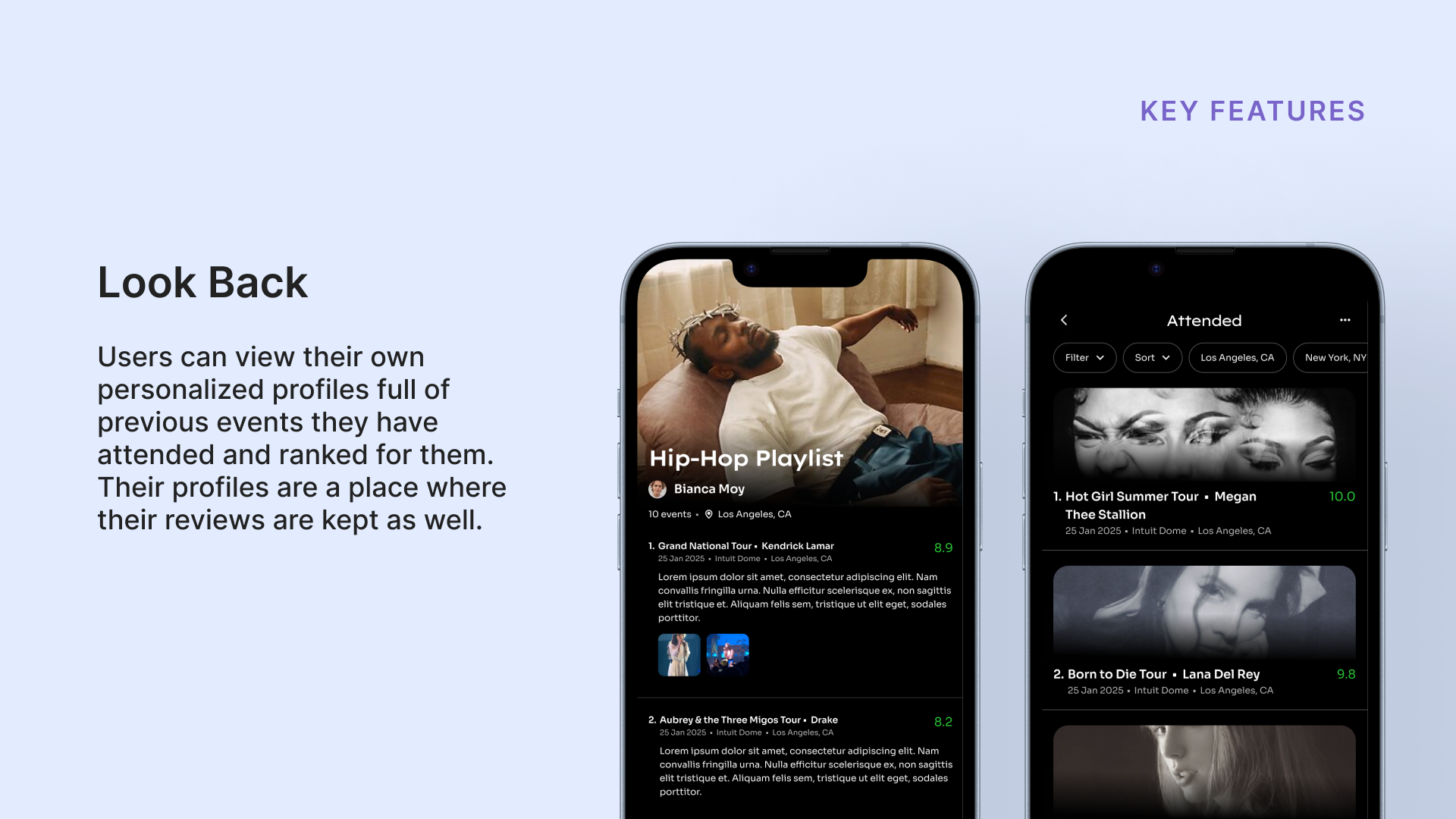Introduction ℹ️
What's your favorite concert you've been to?
While having coffee with a friend, I was asked this question—and I struggled to answer. I realized I couldn’t remember all the performances I had attended or how I felt about them and neither could they. Unlike restaurants, books, or movies, there wasn’t a social app dedicated to tracking and sharing live music experiences. This gap inspired me to design an app where people can keep a record of their live events, share reviews, and see their friends' experiences, making it easier to relive and recommend unforgettable performances.
Problem 🧐
Live music experiences are fleeting, and many people struggle to remember the concerts they’ve attended or how they felt about each performance. While there are review platforms for restaurants, books, and movies, no dedicated social app exists for tracking and sharing live music experiences. This lack of a centralized space makes it difficult to revisit past events, exchange recommendations, and connect with friends over shared musical moments.
Competitive Analysis 🔎
I conducted a competitive analysis of Beli, Letterboxd, DICE, Bandsintown, and Songkick, evaluating their UX, visual, and interaction design. Beli (restaurant tracking) and Letterboxd (movie reviews) offer strong social and review features, while DICE, Bandsintown, and Songkick focus on event discovery and ticketing.
By noting each app’s strengths and weaknesses, I identified gaps and opportunities to inform my design decisions. This analysis helped ensure the app offers a unique and seamless experience tailored specifically for live music tracking and social engagement.

Ideation 🧠
UX Flow Chart 🕸️
To define the core user experience, I created a UX flowchart in FigJam, mapping out key interactions such as viewing friends' reviews, searching for past or upcoming events, ranking attended performances, and accessing personal profiles.
Given a 10-day timeline, I focused on these primary actions to ensure a clear, intuitive journey. This flowchart helped visualize user paths, identify potential friction points, and streamline navigation.

Moodboard 😊
To establish the app’s visual identity, I created moodboards focusing on color, typography, and spatial depth. I explored how the design should evoke the energy of live concerts—dark yet vibrant, full of life and color.
The app should feel:
- Fun – Encourages interaction and excitement
- Vibrant – Bursting with energy and color
- Interactive – Seamlessly connects users with live music experiences
- Cool – Modern and visually striking, like a live concert atmosphere



Sketches ✏️
After ideating through competitive analysis, UX flows, and moodboards, I created sketches to visualize key interactions. I then walked users through these sketches to gather rapid feedback, allowing me to make quick iterations and refine the design early in the process.





Design System 🌈
I created a quick style guide with typography, colors, and key components, forming a small design system to ensure consistency and scalability.

Final Designs 🖌️
Designing the high-fidelity user journey for browsing the feed, rating a live performance, and navigating the profile took seven days.
👉 Click here to view the prototype






Usability Testing 📱
I sent my app to friends for usability testing, providing them with user experience goals and step-by-step tasks, then collected their feedback.

Next Steps 🔜
🔎 Identify common pain points, usability issues, or areas of confusion. Categorize feedback into critical issues, minor improvements, and feature suggestions.
🧪 Expand testing to a wider audience, such as target users or industry peers.
🖌️ Implement design refinements based on feedback.
📄 Outline a roadmap to outline the core features for your Minimum Viable Product.
🚀 Collaborate with engineers to build product.




